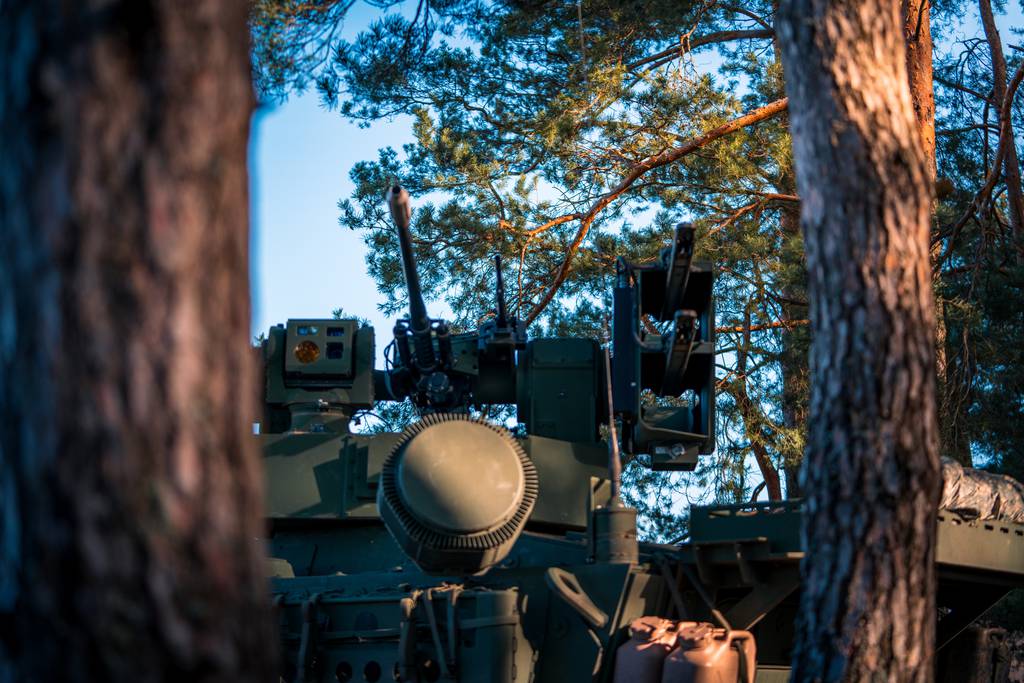
The U.S. Army has unveiled a whitepaper detailing how the service plans to shrink the force in some places and grow it in other areas.
The document’s release on Tuesday comes as the Army continues transitioning from counterinsurgency missions to large-scale combat operations against technologically advanced adversaries, Army Secretary Christine Wormuth explained at a Feb. 27 event in Washington hosted by the Defense Writers Group.
Force structure changes are also necessary, she said, because the Army is working through a massive modernization effort involving a wide variety of new capabilities coming online now and over the next two decades.
“What we’ve done through the force structure changes is make room for some of the new formations,” she said, adding this equates to 7,500 new spaces for soldiers to go.
At the same time, the service’s recruiting challenges have left it with a “hollow force structure,” Wormuth said, “so we needed to basically reduce 32,000 spaces to both shrink over-structure and make room for that 7,500 [spaces] of new structure.”
The Army’s current authorized force structure is 445,000 active duty soldiers, but the service was designed for 494,000. The new force structure is meant to shore the gap, bringing troop levels to approximately 470,000 soldiers by fiscal 2029.
Wormuth told Defense News in an interview last fall that the Army was preparing to go to Capitol Hill to address some vital changes that would include both reductions from the counterinsurgency-related structure and high-tech additions to the force’s inventory. The planned force structure would focus more on operations at the corps and division levels, and less on brigade combat teams.
“By bringing force structure and end strength into closer alignment, the Army will ensure its formations are filled at the appropriate level to maintain a high state of readiness,” the Army’s whitepaper stated. “At the same time, the Army will continue to transform its recruiting efforts so that it can build back its end strength, which is needed to provide strategic flexibility, reduce strain on frequently deploying soldiers, and add new capabilities to the force.”
What’s in?
Some major elements of the new force structure will include building out the Army’s five theater-level multidomain task forces, or MDTF.
The Army has already established three MDTFs: two in the Indo-Pacific theater and one in the European theater. The service plans to set up another dedicated to the Pacific region, and yet another that is “service-retained” to likely focus on U.S. Central Command’s area of operation, Wormuth said at the Defense Writers Group event.
The MDTFs will consist of a headquarters and headquarters battalion, a multidomain effects battalion, a long-range fires battalion, an Indirect Fire Protection Capability battalion, and a brigade support battalion, the whitepaper noted.
“As discussions with allied countries progress over time, the Army will likely forward station elements of the MDTFs permanently, such as the multi domain effects and long range fires battalions, to strengthen deterrence,” the document stated.
The Army will also make “significant investments” in structure for integrated air and missile defense at both the corps and division levels to include four additional Indirect Fire Protection Capability battalions that offer defense against rockets, artillery, mortars, drones and cruise missiles at fixed and semi-fixed sites; and four additional Maneuver Short-Range Air Defense battalions.
The document noted that these new and additional formations are “only a representative sample of the Army’s full capability growth.”
What’s out?
Some of the structure that is coming out of the force are spaces authorized but not filled by soldiers. The Army won’t be asking current soldiers to leave, the paper explained.
“The Army looked carefully at each military occupational specialty, and examined each skill set and functional area for efficiencies,” the paper read. For instance, the Army will reallocate engineer assets at the brigade combat team level to the division echelon, “which allows the Army to reduce the overall number of engineer positions while giving division and corps commanders flexibility to concentrate assets as necessary during large scale combat operations.”
The Army reduced almost 10,000 spaces through efficiencies like reallocating engineer assets. The service also reduced 2,700 authorizations based on modeling, the paper stated, to include factors like “demand over time, capacity to meet National Defense Strategy requirements and past deployment stress.”
Some other Army-wide reductions will come from adjustments to close combat forces, according to the paper, to include inactivation of cavalry squadrons in continental U.S.-based Stryker brigade combat teams and infantry brigade combat teams, converting the latter’s weapons companies to platoons and eliminating some positions in the security force assistance brigades “representing a decrement to capacity at minimal risk.”
These reductions equate to another 10,000 reductions in space, the paper noted.
The Army also observed that its special operations forces had doubled in size over the past 20 years. “The Army conducted extensive analysis examining special operations requirements for large scale combat in multiple theaters and applied additional modeling to understand the requirements for special operators during the campaigning phase of great power competition,” the document stated.
The service concluded the structure there could be reduced by 3,000 spaces. “Specific reductions will be made based on an approach that ensures unique SOF capabilities are retained,” the paper added. “Positions and headquarters elements that are historically vacant or hard to fill will be prioritized for reduction.”
Author: Jen Judson
Source: DefenseNews



